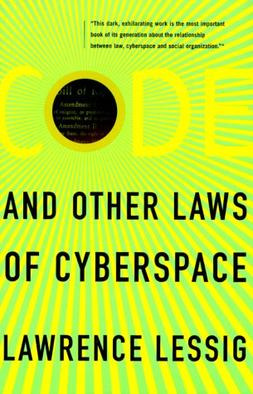Code and Other Laws of Cyberspace
Code and Other Laws of Cyberspace is a 1999 book by Lawrence Lessig on the structure and nature of regulation of the Internet.
The primary idea of the book, as expressed in the title, is the notion that computer code (or "West Coast Code", referring to Silicon Valley) regulates conduct in much the same way that legal code (or "East Coast Code", referring to Washington, D.C.) does. More generally, Lessig argues that there are actually four major regulators (Law, Norms, Market, Architecture) each of which has a profound impact on society and whose implications must be considered (sometimes called the "pathetic dot theory", after the "dot" that is constrained by these regulators.)
The book includes a discussion of the implications for copyright law, arguing that cyberspace changes not only the technology of copying but also the power of law to protect against illegal copying. It goes so far as to argue that code displaces the balance in copyright law and doctrines such as fair use. If it becomes possible to license every aspect of use (by means of trusted systems created by code), no aspect of use would have the protection of fair use. The importance of this side of the story is generally underestimated and, as the examples in the book show, very often, code is even (only) considered as an extra tool to fight against "unlimited copying."
(Source: Wikipedia entry on Code and Other Laws of Cyberspace)
Critical writing that references this:
| Title | Author | Publisher |
Year |
|---|---|---|---|
| Electronic Literature | Scott Rettberg | Polity | 2018 |


